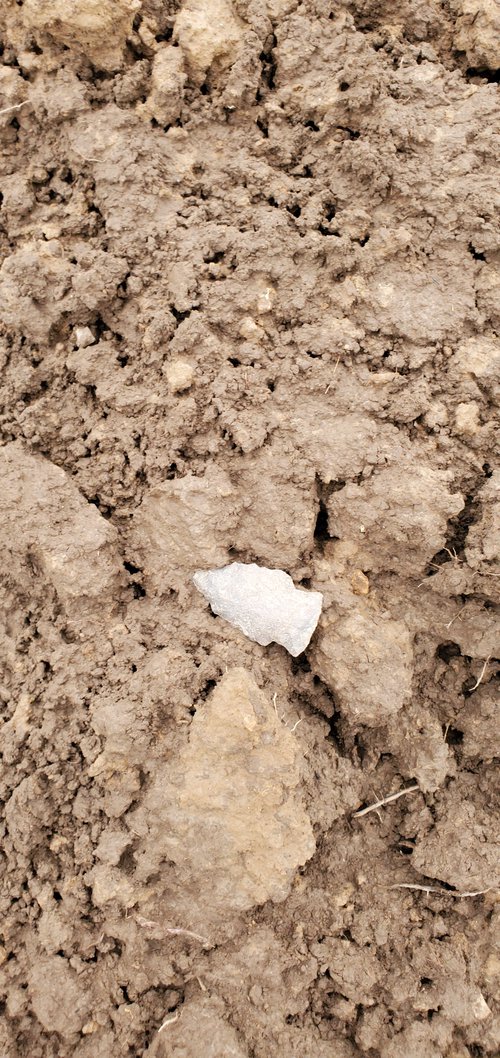FAYETTE – This area of Southwest Wisconsin is full of history and Robert Pierce of Fayette has been finding pieces of that history on his farm.
Just outside of Darlington, Pierce runs a 35-cow dairy. He has been a dairy farmer all his life, growing up on a small dairy farm between Darlington and Fayette.
His grandfather had found Native American artifacts, like arrowheads on the land Pierce currently farms. Pierce would always keep an eye open, hoping to find something.
“As a kid, I would find arrowheads when cultivating corn in the summer,” Pierce says.
As the years went on, the hunt for artifacts took a back burner to life. Then about seven years ago, he started paying more attention again and started walking the fields looking for anything that didn’t seem to fit.
“At that time I joined several artifact groups on Facebook. This fueled the incentive to look more. Since then I’ve read more about the people and the lifestyles they lived back in that time period,” Pierce said.
His family’s farm sits on the east side of a small river valley and a small stream, which cross their land as well. Between his property and the neighboring land is where many artifacts have been found.
“There are campsites and quarry sites for raw materials they used in the production of stone tools. This stone is called chert; the common type found here is called galena chert, which is grey in color. On these sites, artifacts have been found that date from as late as the Woodland period to back to the Paleoindian time period,” Pierce said.

“I have found artifacts from arrowheads, dart points, halted knives, and spear points,” Pierce said.
The use of bows and arrows are not as old as one may think. According to Pierce, bows and arrows were developed in the last 500 years and many of the artifacts people think are arrowheads are really spear points. They went from spears to atlatl, a stick used to increase the force and distance to throw a lighter smaller type of spear or an atlatl dart.
“The points were much smaller than spear points and bigger than a true arrowhead,” Pierce said. “When they went to use the bows and arrows, the points became much smaller. Most of the pieces are broken due to damage done by field equipment.”
Pierce has also found stone scrappers used on hides or for every day use and hard stones used for making tools or the arrow or bow points, like the hammer stone he found last year.
He says he is interested in items he finds for the preservation of history as many are slowly being destroyed due to fieldwork.
“By keeping track of the sites and what is found on them, an idea of how people lived and moved over the years can be figured out,” Pierce said.
Pierce wants to share what he has learned and researched over the years, to help educate others.
“I keep my finds, even the broken ones, as they all tell a story.”





